AIR交換プログラム活動成果報告会 序
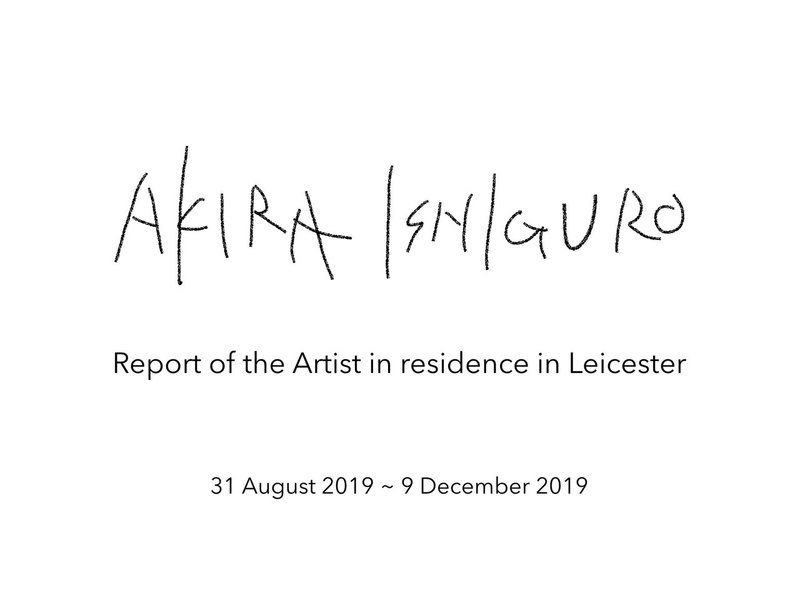
石黒昭です。お忙しい中本当にありがとうございます。
僕は2008年より独学でアーティストとしてのキャリアをスタートしました。デコラティブペイント職人の経験から、虚実の捻れたはざまの表層へのアプローチを作品にしています。近年ではマーブレスクシリーズにおいて、新しい地質年代の表層である人新世の景色を描いた絵画を国内外で発表しています。
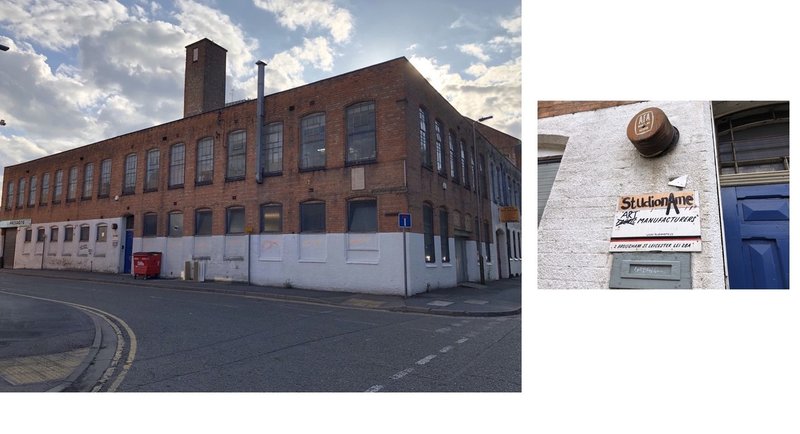
今回のイギリスのレスターにおける遊工房とStudionAmeの交換プログラムへの参加は、人新世研究の第一人者(国際層序委員会 人新世作業部会 会長)であるヤン・ザラシーヴィッチ教授がレスター大学で教鞭を執っていることを知ったのと、偶然にも同じタイミングで募集を知ったことが切っ掛けでした。
I started joining the exchange program between Youkobo and StudionAme when I knew Prof. Jan Zalasiewicz who is the leader of the Anthropocene Working Group of the International Commission on Stratigraphy is at the University of Leicester and I found the open call for Leicester. As it happens, they were the same timing.
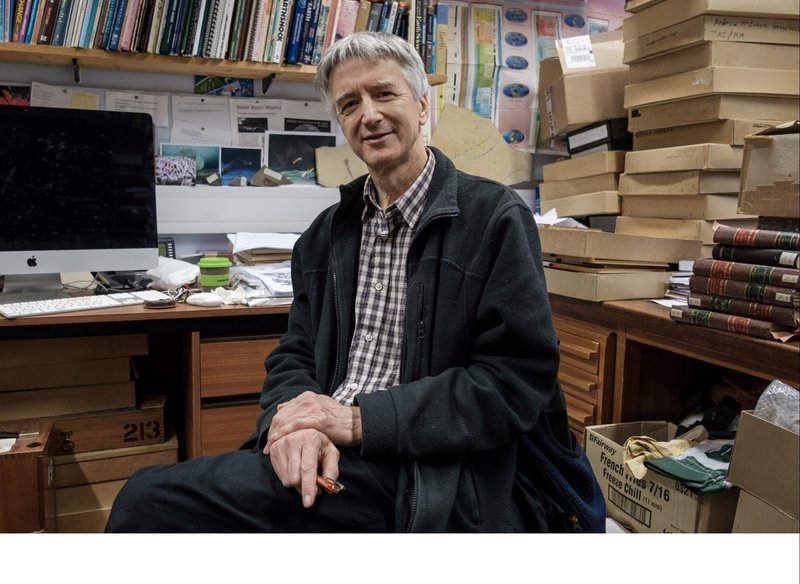
ヤン教授に登場してもらいます。
この写真はレスター大学の彼のオフィスを訪ねた時に撮らさせてもらいました。
He is Prof. Jan Zalasiewicz. I visited his office at the University of Leicester.
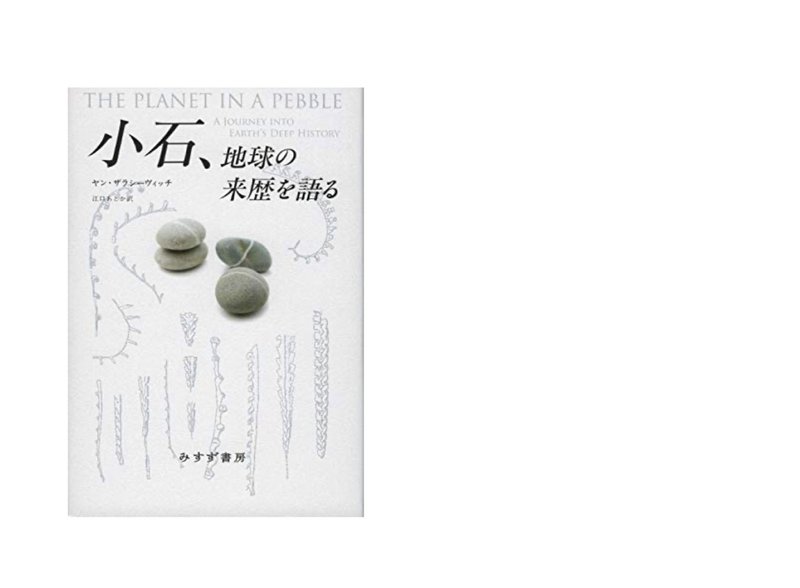
これが彼の著書で「一個の小石に宇宙を見る」という、とてもロマンに溢れた本です。小石に封じ込められた元素、鉱物、化石の来歴を調べ上げて、宇宙や地球の誕生、古代の大陸や海の出現、地球で起きた数々の事象、景色がつぶさに描かれています。もし興味ある方は読んでみてください。
この中に度々「ウェールズの海岸」「わたしたちの小石」という言葉が出て来きます。これはウェールズ西岸のアベリストウィスという街の海岸を指しています。どういうところか、地図で位置を確認してみたいと思います。アベリストウィスはここになります。レスターから列車で片道5~6時間かかります。地層が露わになっているところがあったりして、地質学的に貴重な場所のようです。

This is his book. “THE PLANET IN A PEBBLE” It has a sense of rich adventure. The history of elements, minerals, and fossils contained in pebbles is examined, and the birth of the universe and the earth, the appearance of ancient continents and oceans, and a number of events that occurred on the earth are drawn in detail.
In this book, the words "coast of Wales" and "our pebble" often appear. They mean a pebble coast on Aberystwyth on the west coast of Wales. Aberystwyth is here. It takes 5-6 hours one way from Leicester by train. There is a place where the strata are exposed, and it seems to be a geologically valuable place.
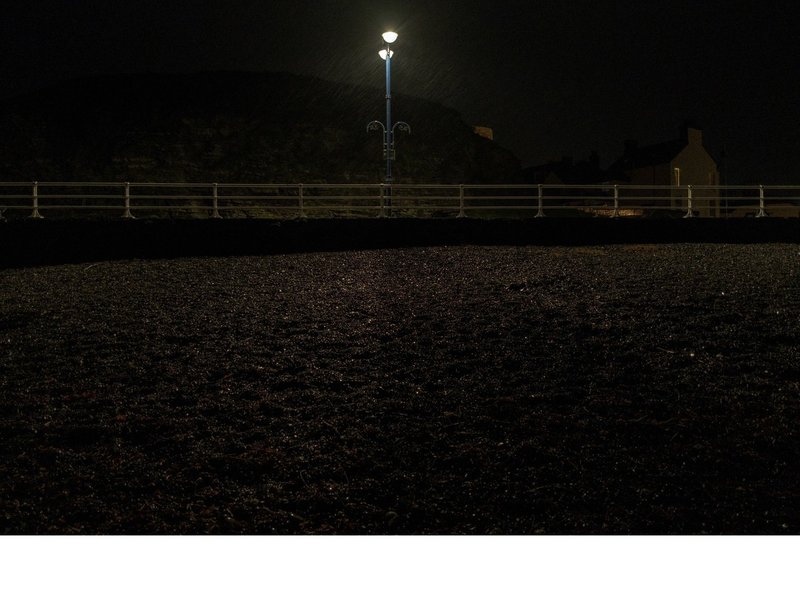
ヤン教授に会う前日にそこへ行きました。
冬のウェールズはというと、誰に聞いても、雨が降って寒いという答えが返ってくるのですが、その日は予報で唯一、日中が晴れだったんですね。日帰りの予定だったのですが、アクシデントがありまして到着したのが夜になってしまって、暗いし、やっぱり雨が降っていました。急遽宿を確保して、暗い中で風雨に晒されながら海岸に小石を拾いに行きました。地層も見たかったのですが、暗くて危険なので小石を持ち帰るという最低限の仕事で切り上げました。
滞在中にたくさん写真を撮ったのですが、この写真はその中でも一番思い入れのある写真です。雨で濡れた小石が街灯の光に反射して、これが僕にはまるで宝石のように見えました。アクシデントも全て仕組まれていたかのように、この時間にここに来るためにイギリスに来たのではないかと、一人でほんとに感動しました。
アベリストウィスから始発で持ち帰った「わたしたちの小石」のコレクションをヤン教授に見せたところ、地質学者の血が騒いだようで、ポケットからルーペを取り出して、その場で解析が始まったんですね。研究者ってこういう人だよなって思いました。
僕は20年以上大理石を描いているので、石を見る目は持っているつもりなんですが、その中に2つ、珍しい石がありまして、それをスライスして、顕微鏡でさらに詳しく来歴を解析してもらえることになりました。
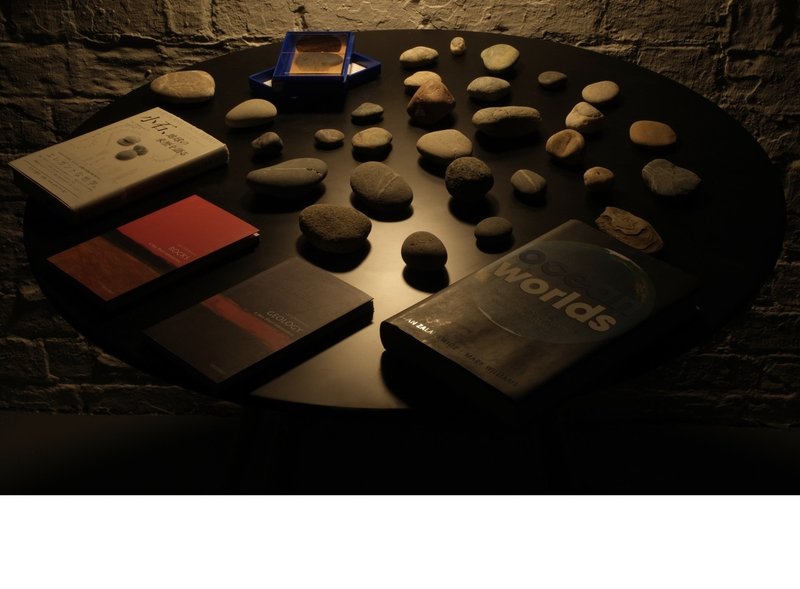
I went there the day before the appointment day and picked up pebbles on the beach on a dark night of rain. The pebbles wet with rain were shining like jewels, reflecting the light of the streetlights. The "our pebbles"I brought back sparked his curiosity as a geologist, and he took the loupe out of his pocket and the analysis of them began immediately.
The "our pebbles"I brought back sparked his curiosity as a geologist, and he took the loupe out of his pocket and the analysis of them began immediately. There were two rare stones that I brought back. He sliced them and analyzed the history in more detail with a microscope.
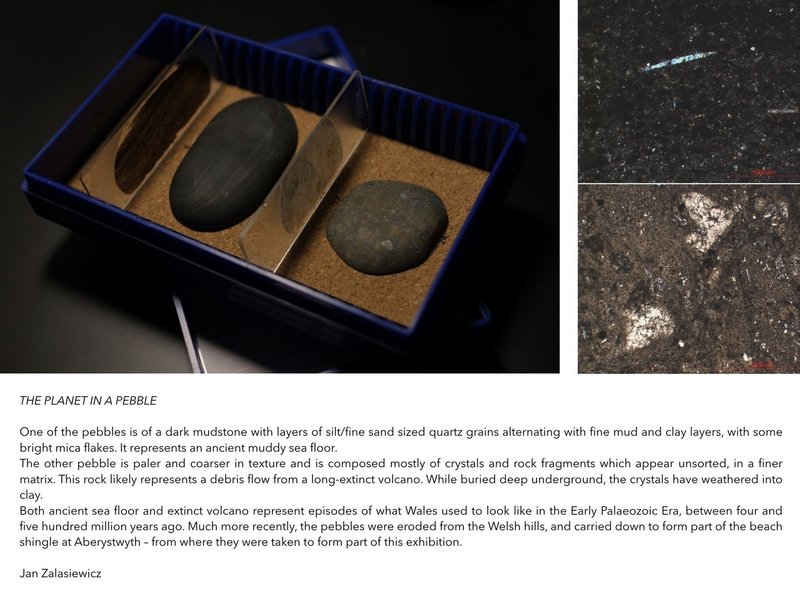
黒い泥岩は古代の泥だらけの海底を表していて、淡く粗い石は休火山となって久しい火山からの土石流を表している可能性が高く、地下深くに埋もれている間に結晶から粘土になった。両方とも、4億年から5億年前の古生代初期のウェールズのエピソードを表しているそうです。さらに最近になって、小石はウェールズの丘から侵食され、アベリストウィスの浜辺の一部を形成するために運ばれました。
という感じで。簡単にですがヤン教授の著書に書いてある様な形式で、僕が拾ってきたわたしたちの小石の物語を書いて頂きました。とても貴重な解析結果です。後で触れますが、これが石に記録されている景色です。僕はこれを風景ともいいます。
ここまでが、今日の序章です。ここから本題に入ります。
THE PLANET IN A PEBBLE
One of the pebbles is of a dark mudstone with layers of silt/fine sand sized quartz grains alternating with fine mud and clay layers, with some bright mica flakes. It represents an ancient muddy sea floor.
The other pebble is paler and coarser in texture and is composed mostly of crystals and rock fragments which appear unsorted, in a finer matrix. This rock likely represents a debris flow from a long-extinct volcano. While buried deep underground, the crystals have weathered into clay.
Both ancient sea floor and extinct volcano represent episodes of what Wales used to look like in the Early Palaeozoic Era, between four and five hundred million years ago. Much more recently, the pebbles were eroded from the Welsh hills, and carried down to form part of the beach shingle at Aberystwyth – from where they were taken to form part of this exhibition.
Prof. Jan Zalasiewicz
Prof.Jan wrote the story of our pebbles that I picked up in the form that is written in his book. It is a very valuable analysis result. I'll touch on it later, but this is the scenery recorded on the stone. I call this landscape.
This is the introduction of today. Let's get to the point
この記事が気に入ったらサポートをしてみませんか?
